Operating as a state within a state, the role, influence and power of the armed Lebanese group, Hezbollah, continues to mystify many.
For the past year, since Israel launched its war on Gaza, Hezbollah and Israel have exchanged near-daily fire across Israel’s northern border with Lebanon. This has culminated in the Israeli bombardment of Beirut and other parts of Lebanon in what Israel claims were targeted attacks on Hezbollah leaders. As a result, Hassan Nasrallah, Hezbollah’s leader for 32 years, was killed, along with several other senior leaders and commanders leaving what many observers have called a power vacuum.
Established in response to the 1982 to Israel’s invasion of Lebanon, Hezbollah has since evolved into one of the most powerful factions within modern Lebanon, one that combines domestic and international political reach, social traction and daunting military capabilities.

What is Hezbollah’s political influence?
Hezbollah’s identity, both as an armed group and a political organisation, allied with its extensive welfare programme, has earned the group significant heft within Lebanon’s fractured democratic political system.
Close ties to a network of sympathetic political parties which, while not formally allied to Hezbollah, nevertheless support it, have gained the group a defining role within the Lebanese parliament and national governmental progress.
However, in recent years, Hezbollah’s political fortunes have come under pressure, as its controversial involvement in the Syrian civil war, when it sent fighters to support the Syrian regime’s armed forces, along with Lebanon’s economic and political stagnation, have undermined popular support for the group, leading to it losing its majority in the elections of 2022, though it retains the largest bloc within parliament.
Hezbollah’s enduring political presence, even surviving accusations of involvement in the events leading up to the devastating Beirut port blast of August 2020, which killed 200 people and wounded 7,000, is in no small part due to its extensive welfare system.
Operating in some of the most deprived areas of the country, Hezbollah oversees the running of hospitals, schools and welfare organisations, burgeoning the group’s reputation as a state within a state.

What is the internal structure of Hezbollah?
Hezbollah’s internal structure is highly centralised and hierarchical, with its leadership primarily guided by its Shura Council.
At the top of the Shura Council sits the secretary-general. Until Friday, that role was filled by Hassan Nasrallah. However, since his killing during an Israeli air strike on a residential suburb of Beirut, no successor has been named.
Reporting to the Shura Council are five distinct bodies; the Political, Parliamentary, Executive, Judicial, and Jihad Councils.
The functions of the Political and Parliamentary Councils are largely evident in their title, with the former enjoying responsibility for maintaining Hezbollah’s political strategies and alliances, while the latter directs the group’s parliamentary activities.
The Executive Council is responsible for the group’s social services and finances, as well as maintaining its critical alliance with Iran.
Lastly, the Judicial Council rules on internal disputes, while ensuring the group retains its religious principles while the Jihad Council oversees the group’s military activities.

Which Hezbollah leaders have been killed by Israeli forces since October 7?
Several of Hezbollah’s commanders have been killed since the group allied with Hamas in response to Israel’s continued attacks upon the besieged enclave which began on October 8, 2023, the day after Hamas led an assault on southern Israel in which 1,139 were killed.
In recent weeks, these killings have included some of Hezbollah’s most senior members, essentially “decapitating” the group in the eyes of many of its critics.
- Hassan Nasrallah: The secretary-general of the group, Nasrallah had maintained overall control of its activities since February 1992. He was killed in an Israeli air strike on Beirut on September 27, 2024.
- Wissam al-Tawil: Known as “Jawad”, was the deputy head of a unit in the elite Radwan force and one of the first senior commanders to have been killed since the group’s involvement in Israel’s war on Gaza. He was killed during an Israeli air strike on southern Lebanon on January 8, 2024.
- Ismail al-Zin: A senior Hezbollah commander who was accused by Israel of playing a senior role in the elite Radwan Force. This was never confirmed by the group itself, who only acknowledged his death. He was killed in an Israeli air strike in southern Lebanon on March 31, 2024.
- Ali Ahmad Hussein: A powerful figure within the group, said to have played a critical role in attacks upon northern Israel. At the time of his death, Ali Ahmad Hussein was commander of Hezbollah’s elite Radwan Force. He was killed in an Israeli air strike on as-Sultaniyah in southern Lebanon on April 8, 2024.
- Fuad Shukr: A senior Hezbollah military commander, Shukr was involved in many of the group’s key operations, allegedly including the 1983 bombing of the Multinational Force in Lebanon’s (MNF) barracks in Beirut, killing 307 people. Shukr was killed in an Israeli air strike in Beirut on July 30, 2024.
- Ibrahim Aqil: A significant figure within the group, Aqil was second-in-command of Hezbollah’s armed forces and a senior leader of the group’s elite Radwan Force. He was killed during an Israeli air strike on Beirut on September 20, 2024.
- Ali Karki: Killed alongside Hassan Nasrallah, Karki had been the commander of Hezbollah’s units in southern Lebanon. He was killed in an Israeli air strike on Beirut on September 27, 2024.
- Nabil Kaouk: A Muslim leader and politician, Kaouk served as the deputy head of Hezbollah’s Executive Council. He was killed in an Israeli air strike targeting Hezbollah’s infrastructure in Beirut on September 28, 2024.

What is in Hezbollah’s arsenal?
Prior to the current Israeli attacks, Hezbollah had been considered one of the most formidable non-state armed groups in the world with an estimated 130,000 rockets in its armoury.
Hezbollah has an extensive array of military hardware, said to include precision-guided missiles, drones, antitank missiles and an extensive number of rockets capable of reaching deep into Israeli territory.
In addition to the group’s continuing armed resistance to Israel, many of its estimated 20,000 to 50,000 fighters have gained additional combat experience in Syria, when the group officially deployed in support of the Presidential regime of Bashar al-Assad from 2012 onwards.
Hezbollah’s military strength has benefitted from substantial financial and military support from its ally, Iran, which, in addition to playing a formative role in the group’s creation in 1982, has continued to act in concert with it over the decades since.



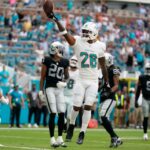
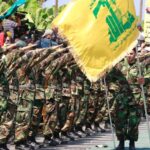

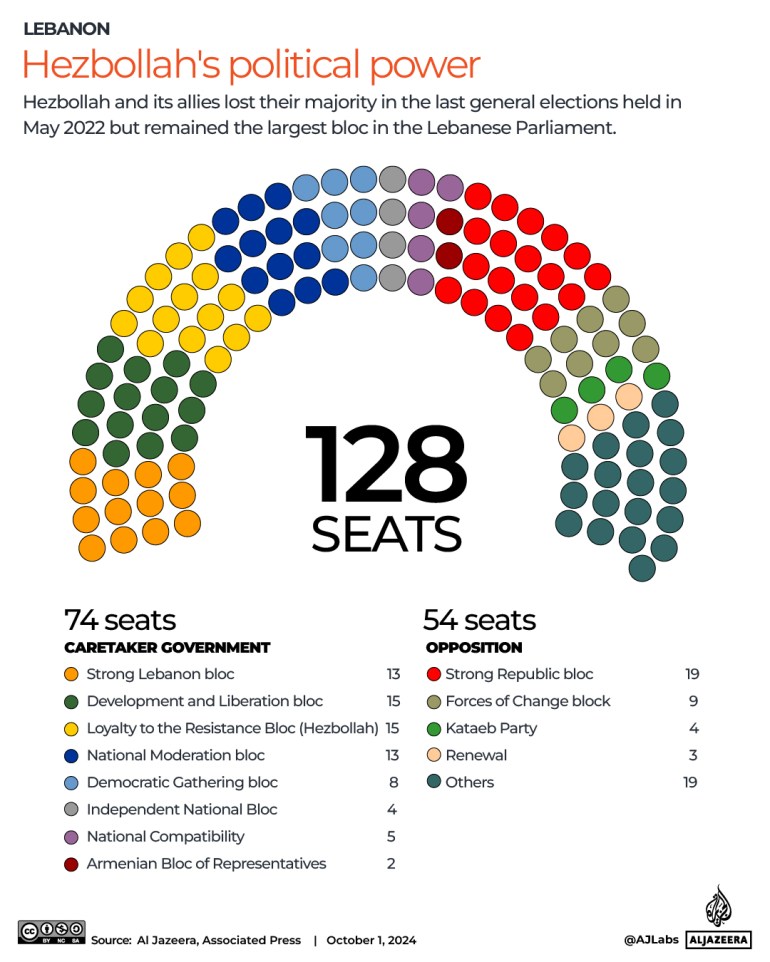
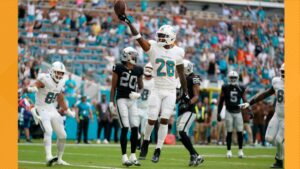
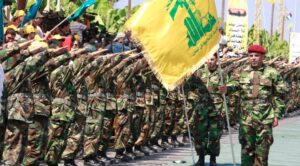
More Stories
Sunshine and cool 70s to start new month of October
Claudia Sheinbaum rindió protesta como presidenta de México
Can Israel root out Hezbollah?